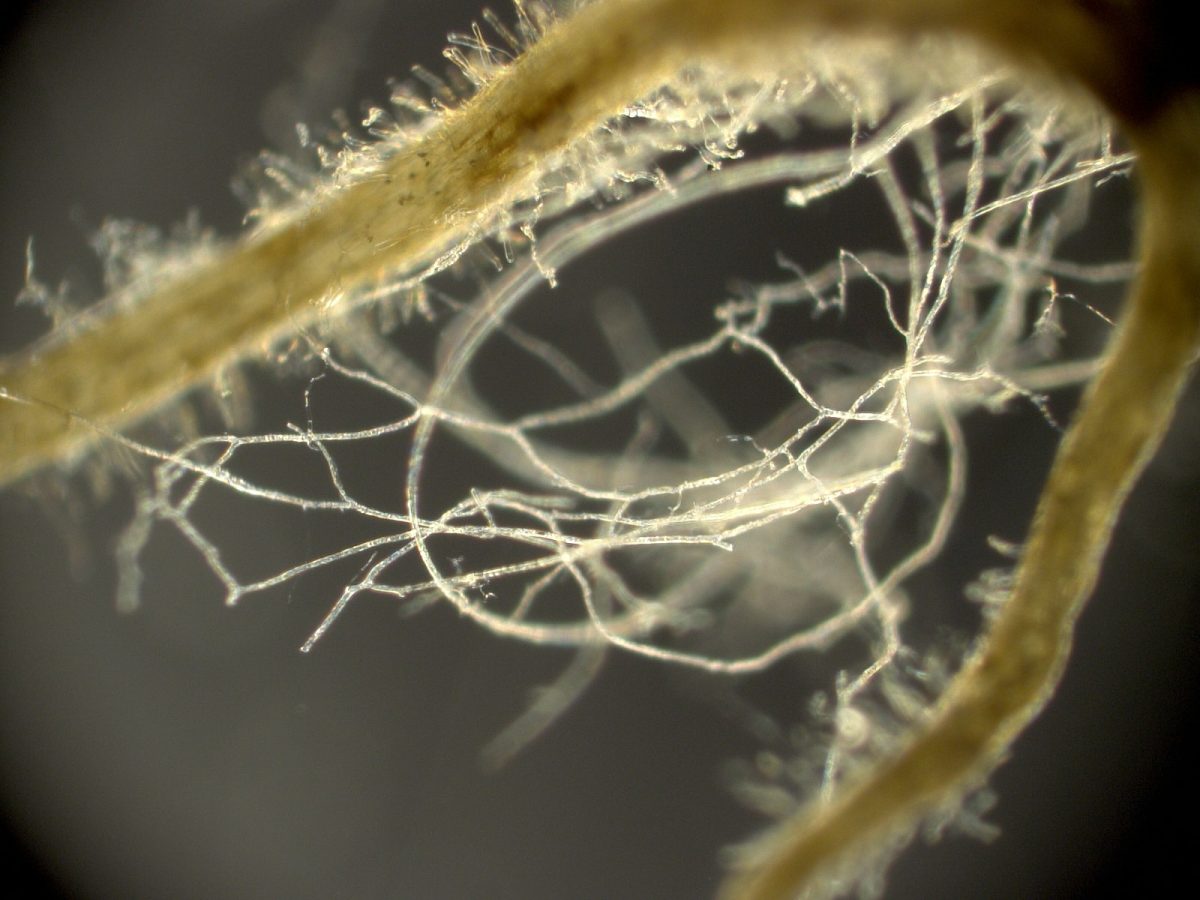Climate Change Fuels The Spread Of Dangerous Fungi

Table of Contents
Warmer Temperatures and Fungal Growth
Increased temperatures are a primary driver in the expansion of fungal diseases. Many pathogenic fungi have optimal temperature ranges for growth and reproduction; as global temperatures rise, these ranges expand, allowing fungi to thrive in previously unsuitable environments. This leads to increased fungal growth rates and faster reproduction cycles, resulting in larger populations and a greater potential for disease outbreaks.
- Optimum temperature ranges: Different fungal species have varying optimal temperature ranges. Some thrive in cooler temperatures, while others prefer warmer conditions. Climate change shifts these ranges, benefiting those that thrive in warmer climates.
- Expanding geographic ranges: The geographic distribution of many fungal pathogens is expanding due to warming temperatures. Candida auris, a particularly dangerous multi-drug resistant fungus, is a prime example. Its spread has been linked directly to rising temperatures in many parts of the world.
- Increased infection rates: Warmer regions are already experiencing an increased frequency and severity of fungal infections. This trend is expected to worsen as temperatures continue to rise, affecting both immunocompromised and healthy individuals.
Scientific studies have demonstrated a clear correlation between rising temperatures and increased fungal activity. For example, a study published in Nature Climate Change found a significant positive relationship between temperature increases and the prevalence of certain fungal plant diseases.
Altered Precipitation Patterns and Fungal Spore Dispersion
Changes in rainfall and humidity significantly impact fungal spore production and dispersal. Increased rainfall and humidity create ideal conditions for fungal growth and spore production, while prolonged droughts can lead to fungal adaptation and increased virulence when conditions improve. The mechanisms of spore dispersal are also altered.
- Wind and water dispersal: Wind and water are crucial vectors for the dispersal of fungal spores over long distances. Increased rainfall and flooding events can transport spores to new areas, while strong winds can spread spores widely.
- Flooding and fungal growth: Increased flooding in previously dry regions creates new habitats for fungi, leading to outbreaks in areas that were previously less susceptible.
- Drought and fungal adaptation: While prolonged droughts may initially suppress fungal growth, they can also lead to the selection of more drought-tolerant strains that become more virulent upon the return of favorable conditions.
Examples of fungal diseases exacerbated by altered precipitation include Coccidioidomycosis (Valley Fever), a respiratory illness whose incidence is linked to rainfall patterns, and various plant diseases that thrive in wet conditions.
Impact on Human Health: Emerging Fungal Infections
The rise of fungal diseases in humans is a direct consequence of the changing climate. Warmer temperatures and increased humidity create more favorable conditions for fungal growth, while altered precipitation patterns can facilitate the spread of fungal spores.
- Increased invasive fungal infections: The incidence of invasive fungal infections, such as aspergillosis and coccidioidomycosis, is increasing globally. These infections are particularly dangerous for immunocompromised individuals.
- Vulnerable populations: Individuals with weakened immune systems, such as those with HIV/AIDS, cancer, or organ transplants, are especially vulnerable to severe fungal infections.
- Diagnostic and treatment challenges: Many emerging fungal pathogens are resistant to existing antifungal drugs, making diagnosis and treatment challenging.
The potential for future fungal outbreaks and pandemics is a growing concern, requiring proactive surveillance and the development of new antifungal therapies.
Impact on Agriculture: Threats to Food Security
Climate change significantly impacts agriculture through the increased prevalence and severity of fungal diseases affecting crops and livestock.
- Worsening plant diseases: Fungal plant diseases such as late blight (affecting potatoes and tomatoes) and wheat rust are becoming more prevalent and destructive due to climate change.
- Economic losses: Crop failures caused by fungal infections result in substantial economic losses for farmers and contribute to food insecurity.
- Global food supply impact: The widespread impact of climate change on fungal diseases threatens global food supplies, with potentially devastating consequences for vulnerable populations.
Mitigating fungal diseases in agriculture requires integrated pest management strategies, including the development of resistant crop varieties, improved sanitation practices, and responsible pesticide use.
Ecosystem Disruptions: The Wider Impact of Fungal Pathogens
Climate change is disrupting the balance of fungal communities within ecosystems, leading to unforeseen consequences.
- Biodiversity loss: Fungal outbreaks can decimate plant and animal populations, contributing to biodiversity loss and species extinction.
- Forest vulnerability: Forests are increasingly susceptible to fungal diseases, leading to widespread tree mortality and ecosystem collapse.
- Carbon cycle disruption: Fungi play a vital role in carbon cycling. Climate change alters fungal communities and their functions, impacting carbon sequestration and potentially exacerbating climate change.
Examples of ecosystem changes driven by fungal outbreaks include the dieback of forests due to fungal pathogens and changes in soil composition resulting from altered fungal communities.
Conclusion
Climate Change and Fungal Diseases are inextricably linked. Climate change is demonstrably exacerbating the spread of dangerous fungi, posing significant threats to human health, agriculture, and the environment. The interconnectedness of these impacts underscores the urgency of addressing this issue. Understanding the mechanisms by which climate change fuels the spread of these pathogens is critical to developing effective mitigation and adaptation strategies.
We must take immediate action to combat climate change and mitigate its impact on the spread of dangerous fungi. Further research, improved surveillance systems, and the development of novel antifungal treatments are crucial steps in protecting ourselves and our planet from the growing threat of climate change and fungal diseases. Let's work together to build a more resilient future.

Featured Posts
-
 Dispelling Safety Concerns A Southern Vacation Hotspots Response To Recent Events
May 26, 2025
Dispelling Safety Concerns A Southern Vacation Hotspots Response To Recent Events
May 26, 2025 -
 Tirreno Adriatico 2024 Examining Mathieu Van Der Poels Custom Canyon Aeroad
May 26, 2025
Tirreno Adriatico 2024 Examining Mathieu Van Der Poels Custom Canyon Aeroad
May 26, 2025 -
 Analyzing Ohnotheydidnts The Hunger Games Live Journal Posts Trends And Themes
May 26, 2025
Analyzing Ohnotheydidnts The Hunger Games Live Journal Posts Trends And Themes
May 26, 2025 -
 Your Thursday Night Plan Top 10 Tv And Streaming Choices
May 26, 2025
Your Thursday Night Plan Top 10 Tv And Streaming Choices
May 26, 2025 -
 E3 Saxo Classic Spectator Who Spat On Mathieu Van Der Poel Receives 300 Fine
May 26, 2025
E3 Saxo Classic Spectator Who Spat On Mathieu Van Der Poel Receives 300 Fine
May 26, 2025
